Introduction
Choy Li Fut 蔡李佛 is a very useful Kungfu style in self-defense and hand-to-hand combat, but it is often misunderstood by both outside observers and its own practitioners.
We want to share on this occasion some of the mistakes that we believe are most common in understanding this valuable system.
Difference between form and application
In Choy Li Fut there is a big difference between form and application. We understand here by form the "standard form", that is, the structure and mechanics of all those movements that reproduce the "ideal" of movement, that is, its most effective version, whether practiced solo, on a training device or on a partner in an agreed manner, and either in the form of tàolù 套路 or through shorter combinations or isolated techniques.
Choy Li Fut is known for its very wide and powerful movements. However, these movements are sometimes not very applicable in combat, since they are easily predictable and therefore easy to evade or block. This leads many martial artists to describe this system as useless in actual self-defense.
However, these aspects need to be better understood. These circular and wide movements represent an ideal, and are not always intended to be applied in combat in the same way as they are practiced in form. They are designed to educate the body to move in a coordinated manner and generate power correctly. Once this has been properly learned and naturalized, the range of movement must be reduced little by little.
In self-defense, you must be able to apply the movements in a reduced way, with short circles and generating power with less range of motion. However, this will only be possible if the body has previously been educated through broad movement, to involve the necessary muscles and do it in a relaxed way.
That is, according to the Choy Li Fut training system, you must first learn to generate power with wide movements, before learning to generate power with short movements. In the application of self-defense techniques we will generally use a combination of these two procedures.
Wider moves can certainly generate more power, but, as we have already said, they are easily noticeable to the opponent. Therefore, these wide and powerful moves will only be used at certain times when the opponent has already been placed in an unstable situation, in which he is unable to defend himself. Meanwhile, only fast, short and direct movements will be used.
Example 1. Difference between wide and short movement:
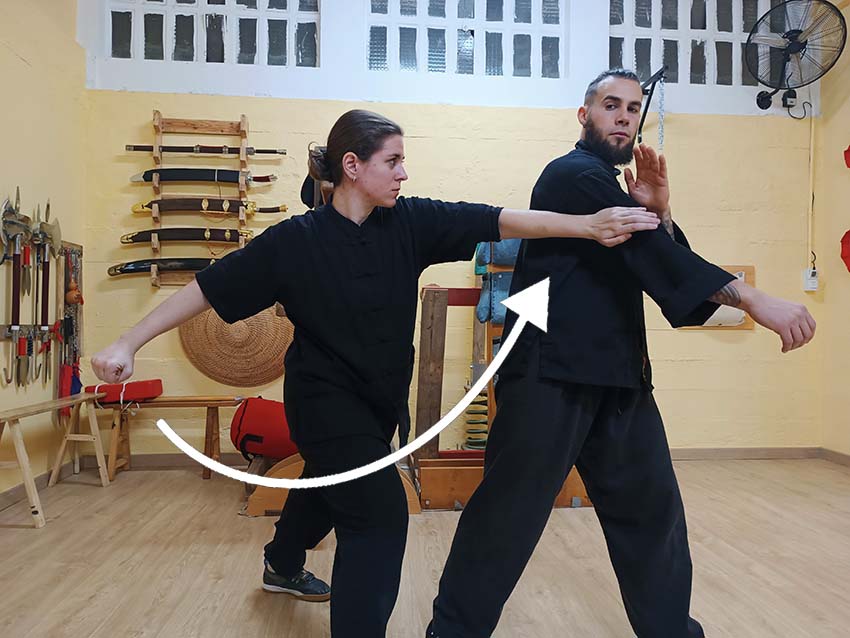
Image 1. In the picture above, the strike is prepared by closing the opponent with left kam 擒, while the right fist is pulled back, ready to strike with sou choi 掃搥. This is an example of wide movements as they appear in the "form."
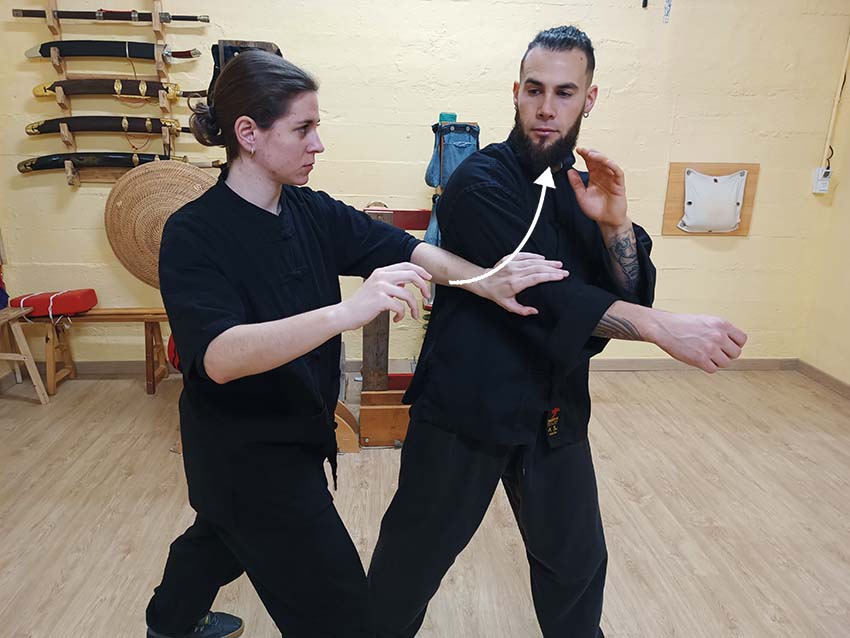
Image 2. In this second image the same situation is represented but in this case the amplitude is reduced. The right hand is in front of the body ready to defend or undertake another action if necessary. The contrast between these two images represents the difference between form and application.
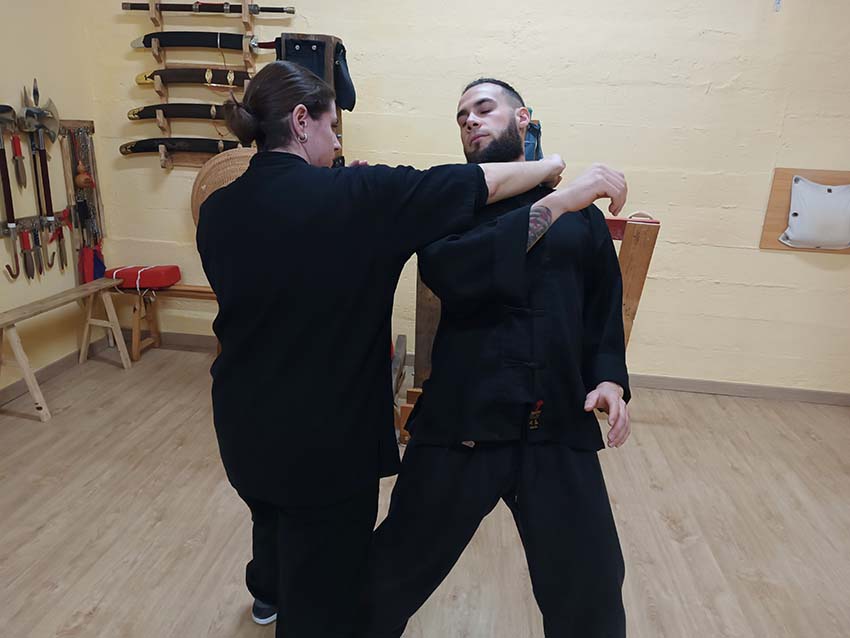
Image 3. In this third image, the opponent is hit with sou choi 掃搥, which represents a possible action after either of the previous two images. The final structure is the same, but, in the first case, the blow is much more powerful, but also more predictable and therefore easier to defend, and therefore we must ensure that the opponent is in an unstable and unstructured situation, that is, defenseless, before applying it.
In the second case, the blow does not generate as much power but in return it is much more immediate and is more difficult to predict, and is, therefore, more applicable. However, both possibilities are achievable in combat; but we find that only wide and long movement appears in the tàolù. As we have said, these movements represent an ideal and are designed to educate the body.
The problem of tàolù
The second aspect we want to discuss lies in the tàolù. The tàolù (in Cantonese, toulou) are standardized sequences of movements trained individually, on devices such as the wooden dummy or wall sacks, or on a partner in an agreed manner.
There are, in our view, two problems relating to the tàolù: the first concerns the number of these, and the second concerns the understanding of their true essence.
Choy Li Fut is a system known to have many tàolù, or kuen 拳, as they are also often referred to in Cantonese. There is no standardized system accepted by all practitioners, but each lineage has a certain number of forms that may be different from those of other lineages.
This, a priori, is not a problem, but many schools practice forms of different lineages and are dedicated to collecting forms and learning endless tàolù in such a way that they can possess several tens or even more than a hundred tàolù.
This gives rise to a big problem, and that is that the training time required to memorize such a number of forms is, simply, huge for anyone.
So, the practitioner's training time is consumed by memorizing sequences, and he spends little or even no time on the training that really matters, which is the training of the combat techniques that contain those sequences.
So we often find practitioners who have memorized a large number of sequences and yet are unable to apply or understand the techniques they contain. In our eyes, this knowledge is totally useless, as well as superfluous, and it is far from the primary purpose of martial art, which is effectiveness in fighting.
The second problem concerning forms often derives from the first, for reasons we have already mentioned, and is the common lack of understanding of what forms are intended to convey to us.
For us, forms or tàolù are not dances or choreographies, but a system to teach the practitioner a way to move and generate power in a coordinated way with the whole body, from the foot to the hand, passing through each joint, in addition to learning a series of techniques and strategies useful for combat.
That's right, techniques and strategies, because not only do the techniques in question have to be learned, but it must be known at what time and under what circumstances each one has to be applied.
However, for the collector of forms, these are not well understood, and often become mere choreographies. Therefore, one does not really understand the essence of what the forms pretend to teach us, which is the essence of the Choy Li Fut system. If this essence is learned and internalized, the forms cease to be necessary, and are mere vehicles that can be abandoned.
Therefore, when a practitioner has already learned a series of tàolù that have taught him the true essence of the system, we have to ask ourselves what need he has to continue learning forms, and if this learning of sequences is not stealing the training time by subtracting it from what really matters.
Strikes are not always strikes; parries are not always parries
Another problem in understanding Choy Li Fut lies in understanding the techniques it contains as mere strikes or parries.
When we study a tàolù, it contains many techniques, which are often understood as strikes or blocks linked to each other. In fact, these sequences are often not very applicable when understood in this way.
If we have ever fought or tried to put the techniques into practice, we will see that it is impossible to make many blocks in a row before receiving a blow, and that the combat strategy cannot be based on blocking and blocking, because in this case, maintaining only a defensive attitude, what we will get is to be hit right away.
Nor are all techniques to be understood as strikes. Of course, throwing a rain of punches on the opponent is possible and effective, and the Choy Li Fut is a very useful and powerful system for this. However, not all techniques are blows or blocks, but many of them have to be understood as knockdowns or chains of qínná 擒拿, in which the opponent's joints are trapped to dislocate them, or to break their structure and destabilize them in preparation for an actual strike.
In addition, most of the system's strikes have a structure that makes them capable of counteracting the opponent's attack while landing on him and impacting in fact. That is, the same hand that executes the technique, blocks and hits at the same time. This is often overlooked by many practitioners of the style, who neglect the structure of the technique by focusing solely on the ability to strike.
Example 2. Not all strikes are strikes.
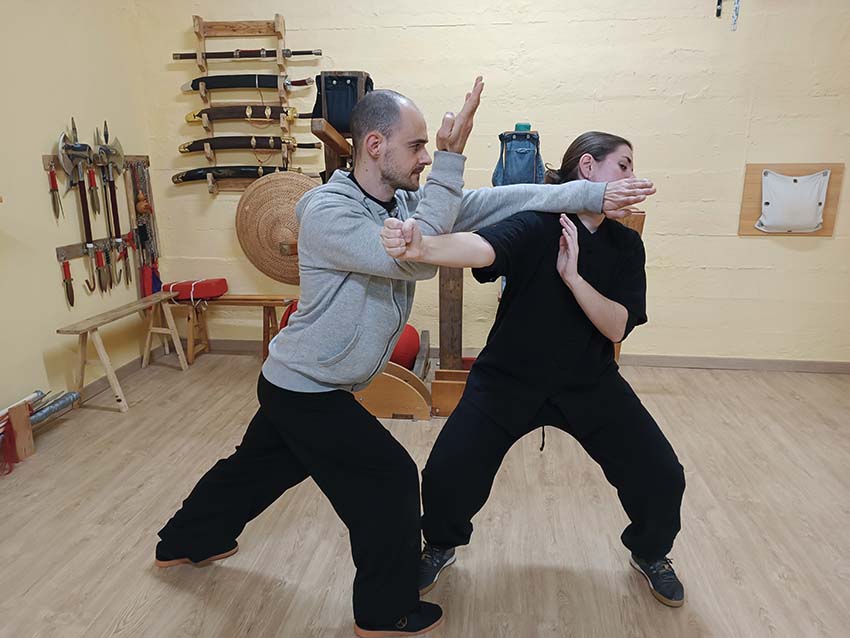
Image 4. This image represents the chau kiu 抽橋 and ding zeung 釘掌 techniques used simultaneously as blocking and hitting, respectively. The right arm blocks a straight punch to the head, deflecting it outward, while the left hand hits the chin or jaw.
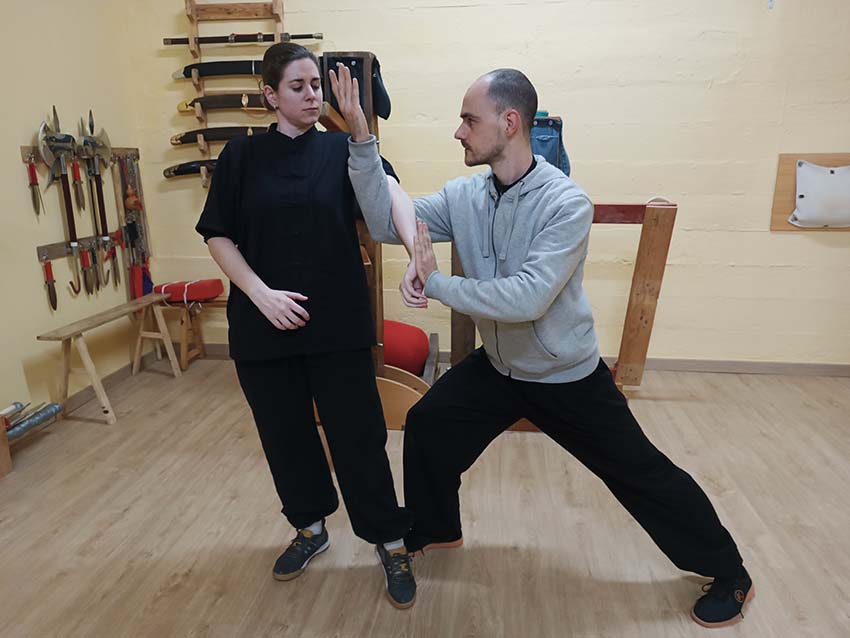
Image 5. This image again represents the same technical combination, but executed as joint control/elbow dislocation. In this case, the right arm holds the opponent's elbow with chau kiu, while ding zeung, instead of a palm strike, represents forward pressure with the left hand, blocking the opponent's elbow and pressing from his wrist towards his neck.
Again, there will be situations where both possibilities are applicable. But we find specific sequences in the tàolù in which the block-strike simply does not make sense; in this case, we must consider its true application differently.
The correct application of angles
Finally, one more problem, in our opinion, is the understanding of angles and their correct application in techniques.
The Choy Li Fut is undoubtedly a long boxing system. However, this does not mean that the limbs should be stretchedin order to reach further, since often, when this is done, the body is exposed unnecessarily, leaving openings that the opponent is able to use to counterattack and hit us.
To avoid this, the correct application of angles is key. The correct angles must be maintained for each technique, keeping us protected even in the attack. If the flexion/extension angles of the limbs are violated, openings are created.
Of course, openings always exist, at rest or in motion, even when the technique is executed perfectly. Here the key is not to generate unnecessary openings, protecting one's own body while executing techniques, and leaving less opportunity for the opponent to deal us a blow.
Thus, we have defensive techniques such as pun kiu or pit kiu, in which many practitioners do not respect the angles correctly, leaving an important opening to exploit by the opponent.
We also have offensive techniques like chap choi, in which sometimes the elbows are unnecessarily extended, when a certain angle should be left to protect one's body.
Example 3. Angles in parrying.
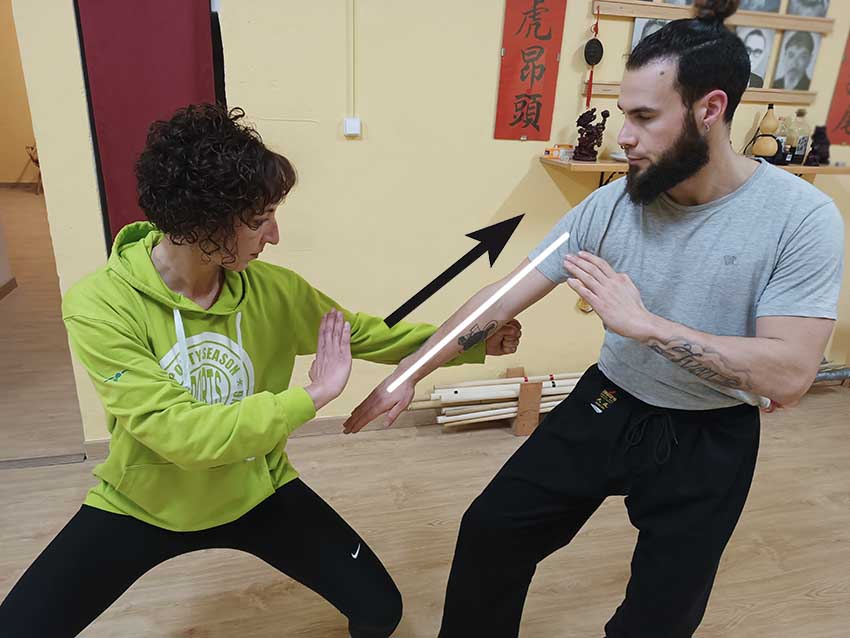
Image 6. In the image above, the practitioner on the right has blocked a straight blow with pit kiu 撇橋, but has not respected the correct angle of elbow flexion. Therefore, the right side of his head is exposed.
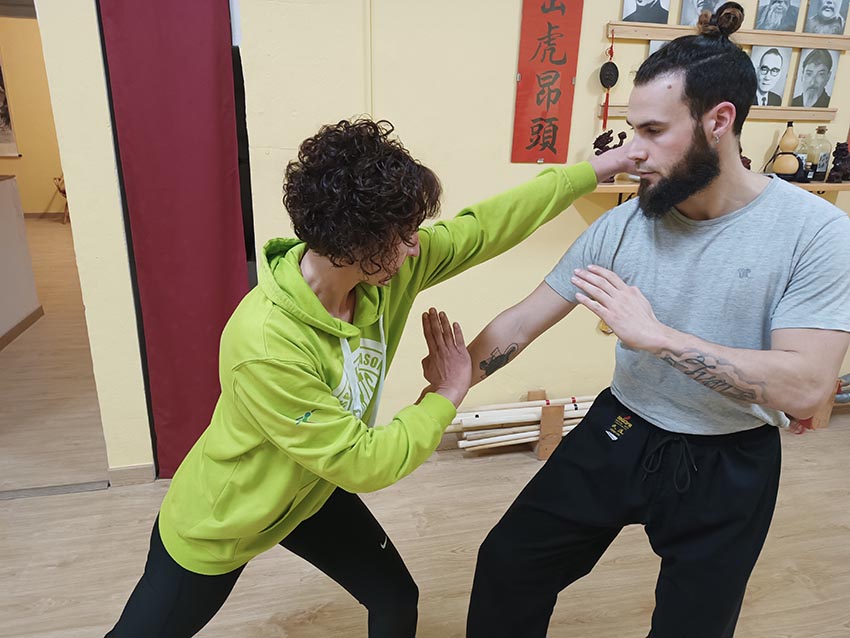
Image 7. Continuing with the previous situation, the practitioner on the left takes advantage of the opening and follows the direction of the block, to sneak through and hit the head. Her opponent does not have time to react, due to the error in the angle of the blocking arm.

Image 8. In this case, again the practitioner on the right has blocked a straight blow with pit kiu, but this time the angle of bending of the elbow is correct.
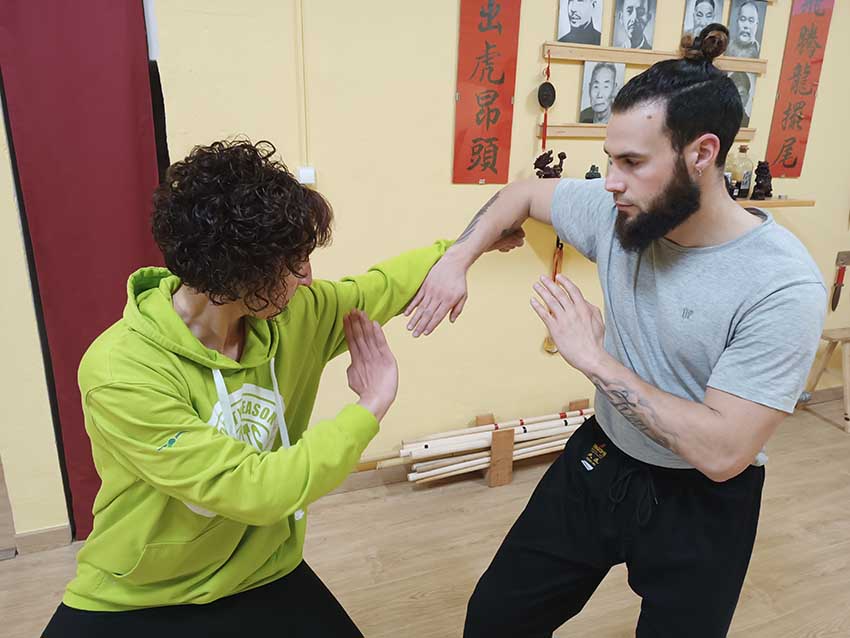
Image 9. From the previous situation, the practitioner on the left tries to sneak towards the top, but the flexion of her opponent's elbow makes it possible for him to maintain contact and close the gap in time.
This aspect is also especially important in relation to the angle with which the practitioner's shoulders and chest align with respect to the opponent, as well as the angle at which their feet are placed on the central line or axis.
We must be careful not to turn the body too much in our impetus to generate power. Doing this unnecessarily exposes our back, giving the opponent a chance to win our rear and leaving us completely helpless when this happens.
Example 4. Angle of alignment of the trunk with respect to the centerline.
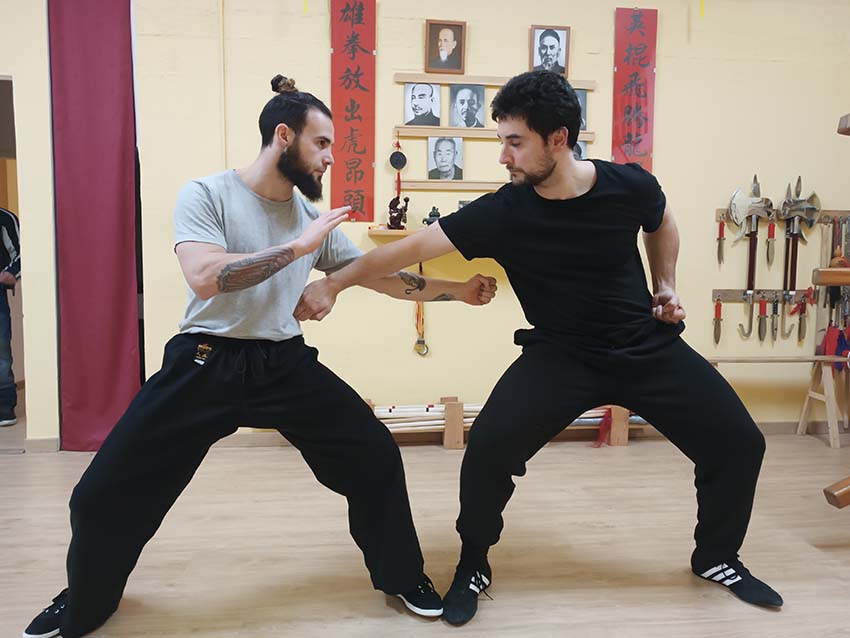
Image 10. The practitioner on the left has attacked with chap choi 插搥 (joeng chap 陽插); the practitioner on the right has blocked with jam chap 陰插, being able to intercept the arm of his opponent and hit with the same technique.
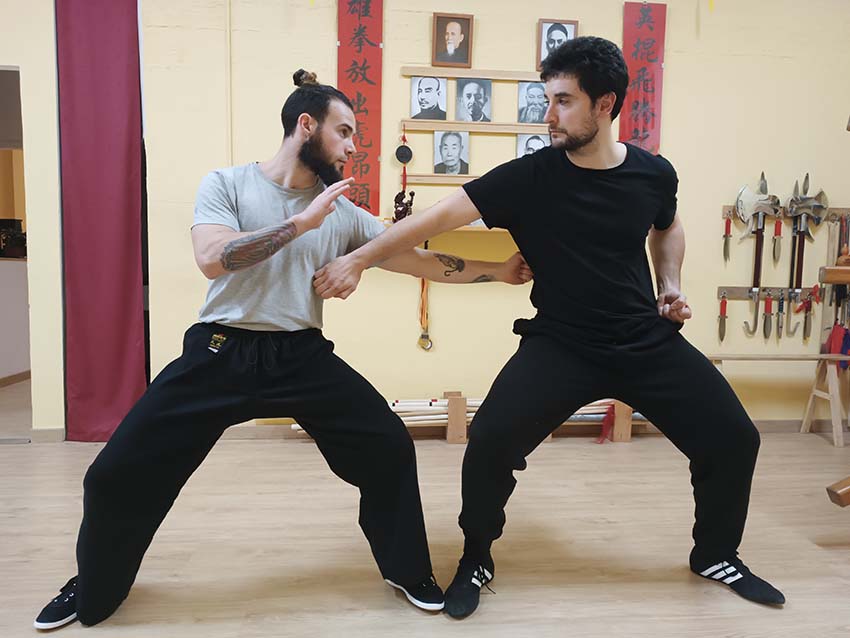
Image 11. This image represents the same situation as before, but in this case the practitioner on the right does not respect the correct alignment of the chest with respect to the opponent, and is excessively turned, so that, although he is able to hit, his blow cannot intercept the opponent's technique. In addition, his back is easily accessible.
Kungfu is not (western) boxing
Choy Li Fut, and in general, no style of Kungfu, is boxing. We consider that, in combat training, it is a mistake to limit oneself to the exchange of strikes. Kungfu does not consist of the mere exchange of strikes and parries, and anyone who considers it so knows little about it.
In Kungfu we seek contact with the opponent. We can exchange blows but, at the moment when contact occurs, we do not separate to strike again, but use it to destructure the opponent and destabilize him/her before striking the final blow or knocking down the opponent.
It's important to keep this in mind to adjust our training, including sparring, to this philosophy. Kungfu is not a sports discipline; We do not seek to score points in combat, but to neutralize the opponent as soon as possible. The objectives are different. In sports combat there are rules and prohibitions; this means that what is useful in sports combat can be a mistake in self-defense, and what is not allowed can be the key to survival.
This is not intended to discredit western boxing or other contact sports; on the contrary, we consider them very useful disciplines and hold them in high regard. But preparing in Kungfu to end up boxing (or kickboxing) would be like training soccer to compete in basketball.
Nor do we mean that sparring training with gloves is not useful in Kungfu; it is one more tool and we must use it, but keeping in mind the limitations it entails, and therefore combining it with other exercises that compensate these limitations.
Conclusions
All these are aspects to take into account in the study of Choy Li Fut, and must be taken care of to maintain its usefulness in combat, as well as to keep the system alive so that this tradition is not lost.
Finally, there is one last aspect that we want to highlight, and that is that in the traditional teaching of Choy Li Fut, many years are first spent studying only the form, before moving on to teach its true application.
We believe that this encourages poor understanding of the system, since, in this way, if a student spends only a few years learning the system and then leaves it, he will leave with a misunderstanding of it. This was useful in the past, when the system had to be protected so that it did not fall into the hands of violent people.
At present we are generally more peaceful people and, with rare exceptions, no one seeks to learn a traditional martial arts system to harm others, because today, if someone has this desire, they go to systems easier to learn or other more immediate means.
That is why we believe it is more useful to teach both facets at the same time, the form and the application, so that the student compares both and gets an adequate idea of what each technique corresponds to. Thus, although the student does not reach advanced stages of learning, at least he or she will have a correct global vision of what the Choy Li Fut system is and what it consists of, and will not leave thinking that it is a useless system that cannot be applied in self-defense.
